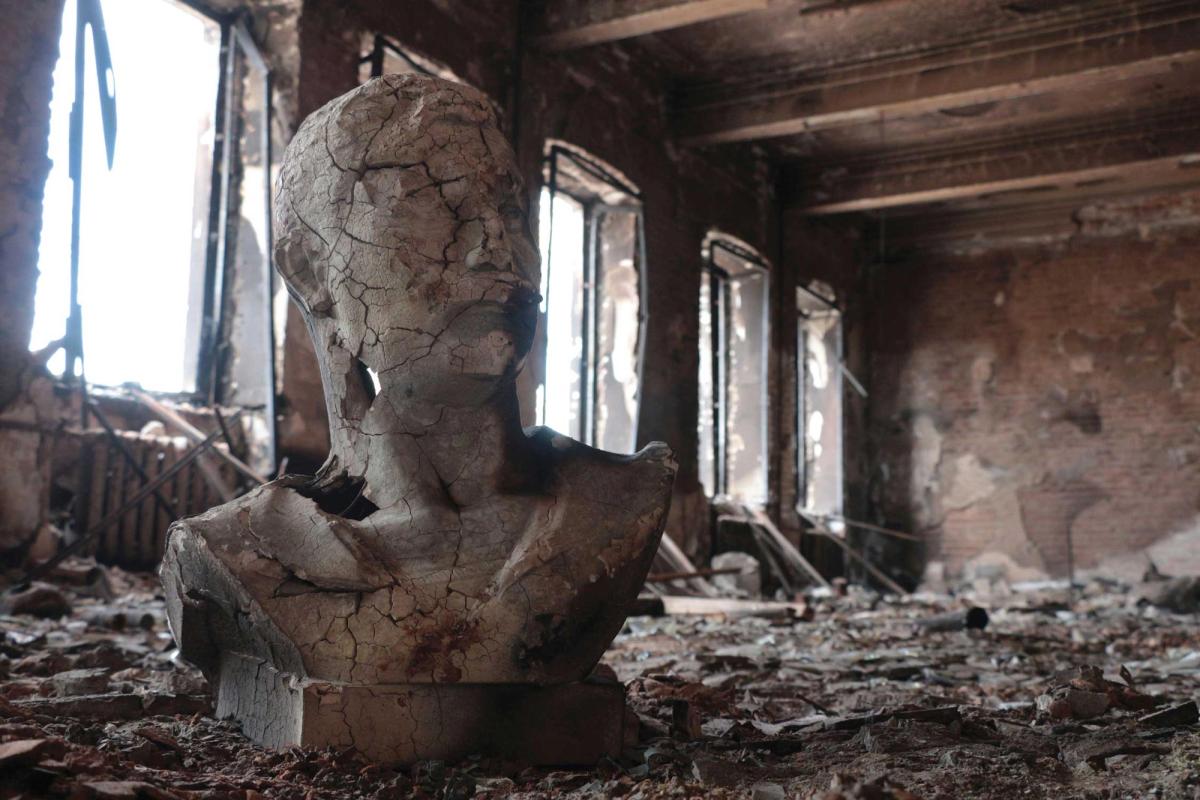Russian Invasion Enters Third Year with Cultural Warfare
In the wake of Russia’s full-scale invasion of Ukraine, which began in February 2022, the city of Mariupol has stood as a symbol of devastation and resistance. Now, Russian authorities have unveiled plans to construct a “museum of the liberation of Mariupol,” scheduled to open in the summer of 2024. This move is part of a broader Kremlin campaign to utilise museums as venues for war propaganda, both within Russia and in occupied regions of Ukraine.
Weaponising Museums for Propaganda
Speaking at a conference held at the VDNH Stalin-era fairgrounds in Moscow, Olga Lyubimova, Russia’s culture minister, outlined the government’s intentions to establish museums dedicated to the “modern history of Donbass and Novorossiya.” These museums are framed as a means to preserve the memory of Russian exploits and to propagate the Kremlin’s narrative regarding the conflict in Ukraine.

VDNH: A Showcase for Kremlin Ideology
The VDNH complex has become a focal point for the dissemination of Kremlin ideology, serving as the launchpad for President Vladimir Putin’s political initiatives. Notably, it hosted the December launch of Putin’s latest presidential run. The site was also the inaugural location for the Russia My History “history park” in 2015, curated by Tikhon Shevkunov, a prominent Russian Orthodox bishop.
Methodological Recommendations for War Museums
A 28-page document titled “Methodological Recommendations for Creating Exhibitions Dedicated to the History of the Special Military Operation” sheds light on the Kremlin’s strategy. This “special military operation,” referred to as SVO, is the official term for the conflict in Ukraine. The document underscores the need to portray the SVO as necessary for protecting the Russian-speaking population from Ukrainian aggression and safeguarding the Russian Federation from perceived threats.
Disturbing Artefacts and Narratives
Among the recommendations for museum exhibitions are displays featuring small arms, children’s toys with traces of blood, instruments of torture, and prohibited Ukrainian and NATO ammunition. These artefacts are intended to reinforce the narrative of Ukrainian aggression and the righteousness of Russia’s actions.
Historical Revisionism and Justification
The State Historical Museum on Red Square held a significant exhibition on Novorossiya in 2023, depicting Ukraine as transitioning into an “Anti-Russia” entity and engaging in processes of Nazification and militarisation. Such narratives aim to justify Russia’s actions while delegitimizing Ukraine’s government.
International Implications and Cultural Reconstruction
Mikhail Piotrovsky, the director of the State Hermitage Museum in St Petersburg, has stated that the Hermitage is involved in efforts to restore museums in occupied territories, including Mariupol. This involvement underscores the broader implications of Russia’s cultural warfare and its impact on historical narratives and reconstruction efforts.
As Russia’s invasion of Ukraine persists into its third year, the construction of a “liberation museum” in Mariupol stands as a stark reminder of the intersection between warfare and cultural propaganda. Through the weaponisation of museums and historical narratives, the Kremlin seeks to justify its actions while shaping public perception both domestically and internationally.
The Unending Fight For The Glory: Best Martial Arts in The World




